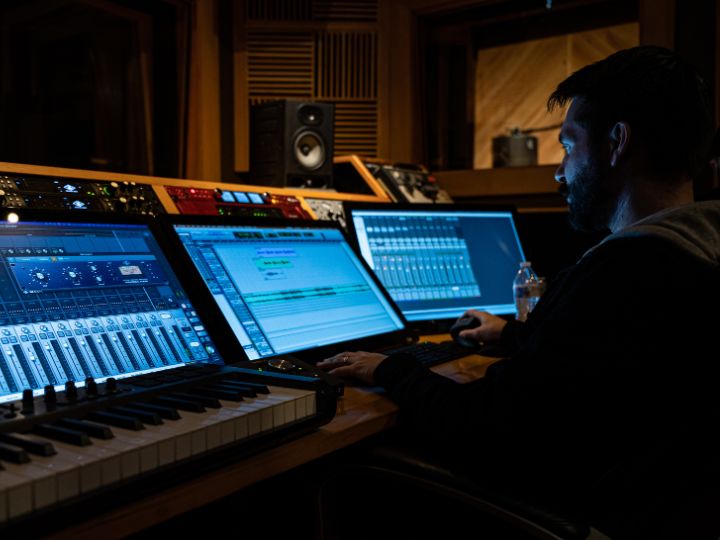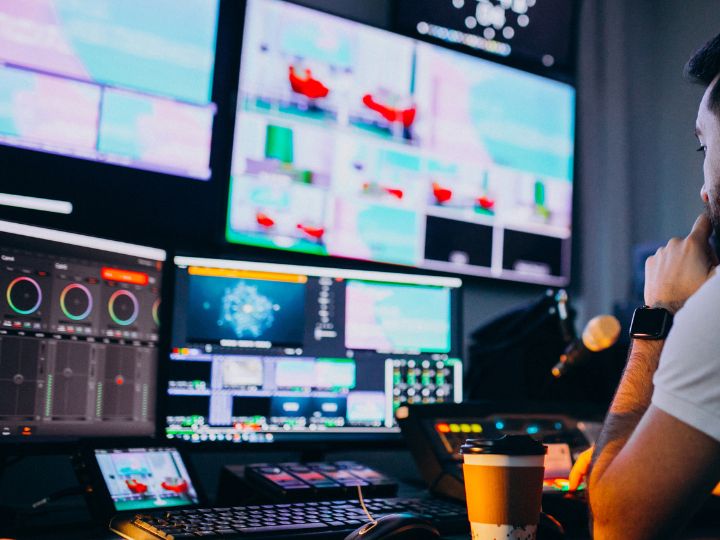10 Advertising Translation Mistakes Every Brand Should Avoid
 October 15, 2025
October 15, 2025

In today’s fast-moving digital world, advertising isn’t bound by borders. A campaign that performs brilliantly in one country might not work in another, not because of creativity, but because of translation.
Advertising translation isn’t just about converting words from one language to another. It’s about keeping the meaning, tone, and cultural essence intact. A single wrong phrase or mismatched slogan can harm brand reputation and even cost sales.
At Naksh & Daksh Productions, we understand how important accuracy and emotion are in advertising. With our expertise in dubbing services in India and post production studios in Mumbai, we help brands speak to audiences in every language without losing their impact.
Let’s look at ten common mistakes brands make while translating advertisements and how you can avoid them.
1. Ignoring Cultural Context
Translating without understanding local culture is one of the biggest reasons advertising campaigns fail. A message that works well in one market may sound awkward or offensive in another. Example: A brand once used a slogan that sounded confident in English but came across as arrogant in another language. Tip: Choose language localization over literal translation. Cultural adaptation ensures the message feels natural and relatable in every region.2. Relying Only on Machine Translation
AI tools can be useful for speed, but they can’t match human creativity or emotional understanding. Machine translation might misinterpret tone, idioms, or brand voice. Tip: Always combine automated tools with professional human translators who can polish the final message. That’s how professional translation services ensure accuracy and authenticity.3. Neglecting Visual and Verbal Alignment
In advertising, words and visuals must work together. If your translated tagline doesn’t match the imagery, the emotional connection is lost. Tip: During the localization process, align the text, design, and visuals together. At Naksh & Daksh Productions, our post production studio in India ensures that voiceovers, subtitles, and visuals stay in sync across all versions of your ad.4. Forgetting Legal Requirements
Every nation has its own laws governing advertising. Failure to localise disclaimers or legal wording can undermine trust and lead to compliance problems. Advice: Collaborate with professionals who are knowledgeable about global advertising norms and who can faithfully translate terms, cautions, and disclaimers without sacrificing the meaning of your content.5. Overlooking Digital Localization
In digital ads, keyword optimization and format play a major role. Literal translations often disrupt ad layouts or reduce visibility on search engines. Tip: Focus on localized SEO. Use keyword research specific to each market. For example, localizing Google Ads or YouTube campaigns through language localization can increase visibility and engagement.6. Losing the Emotional Tone
Ads are successful when they connect emotionally. If the tone of your ad doesn’t match the target audience’s emotions, the campaign will lose its essence. Tip: Emotion should always travel across languages. Use dubbing services to recreate authentic voice-overs that capture the same mood as the original.7. Inconsistent Brand Messaging
When multiple translators work on the same campaign without coordination, brand language becomes inconsistent. Customers notice these differences, even slight ones. Tip: Maintain a translation style guide or glossary that defines your brand’s voice, tone, and keywords. It keeps messaging consistent across regions and formats.8. Skipping Multilingual Voiceovers and Subtitles
Digital marketing is dominated by video content, but many firms choose voiceovers or subtitles over localisation. This lowers engagement and restricts the audience's reach. Advice: Using dubbing and post-production to add localised voiceovers and subtitles makes your brand story easier for viewers to comprehend and relate to on an emotional level.9. Ignoring Regional Dialects
Languages evolve across regions. For instance, the same word may carry different meanings in North and South India, or between Latin American and European Spanish. Tip: Always adapt your message for the regional dialects of your target market. That’s where professional translation services add real value.10. Choosing the Wrong Translation Partner
One of the biggest mistakes is working with inexperienced or generic providers who treat translation as a word-for-word job. Tip: Work with specialists who understand branding, creativity, and culture. At Naksh & Daksh Productions, we offer end-to-end post-production and localization services, blending accuracy, creativity, and cultural fluency.Why Naksh & Daksh Productions is the Right Choice
With years of experience in advertising localization, dubbing, and translation, we’ve helped global and Indian brands adapt campaigns across languages and formats. Our Mumbai-based post-production team ensures every translated ad, from voiceover to subtitle, feels native and emotionally aligned. Our core strengths:- Native translators and voice artists who understand local nuances
- End-to-end support for dubbing, subtitling, and voice recording
- SEO-driven language localization for digital campaigns
- Quick turnaround with expert quality assurance
Final Thoughts
Advertising translation is a creative process that blends emotion, language, and culture. Getting it right can elevate your brand; getting it wrong can undo years of effort. By focusing on localization, emotional tone, and the right translation partner, your campaigns can connect with audiences anywhere in the world. At Naksh & Daksh Productions, we make sure your brand’s voice stays strong, authentic, and culturally relevant no matter where it’s heard.Frequently Asked Questions
- What is advertising translation, and why does it matter?
- Why should I choose professional translators over machine tools?
- How does dubbing improve ad localization?
- Can translation affect SEO for digital ads?
- How can Naksh & Daksh help with global advertising?
Latest Blog Posts
Have an idea?
Let’s Talk.!
We create experiences that fuel connections between brands and the people vital to their success.
Contact Us






